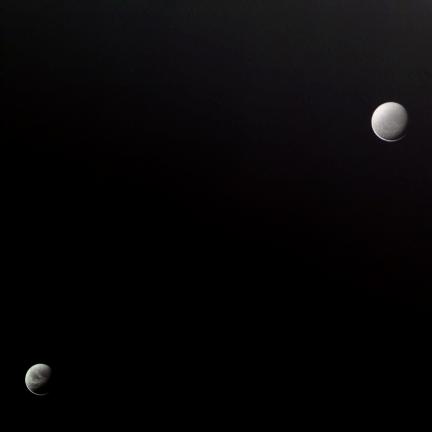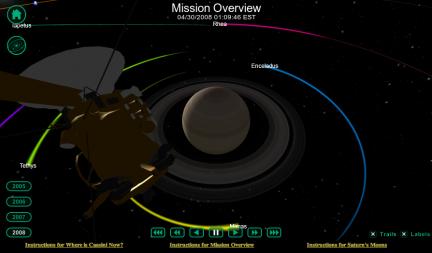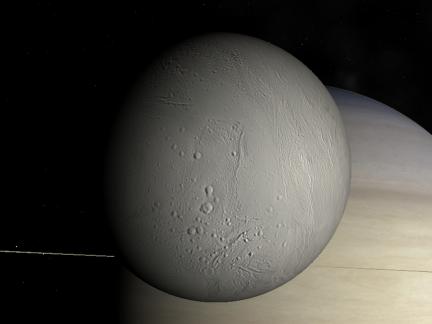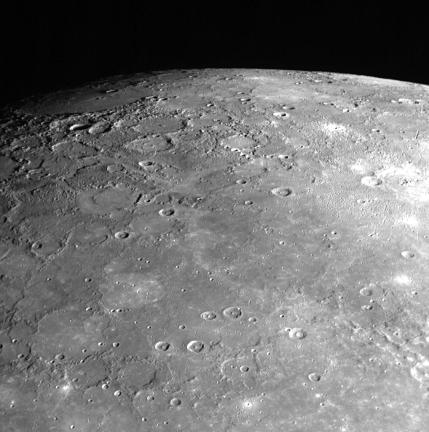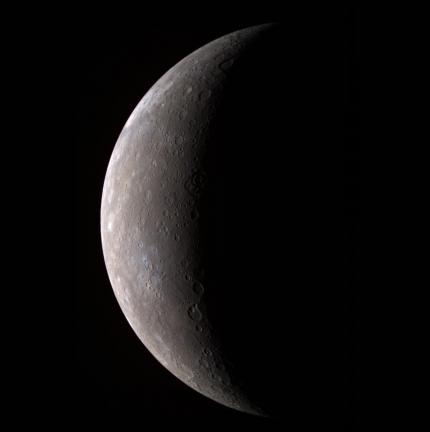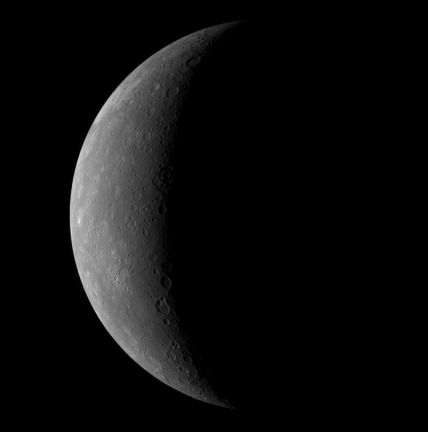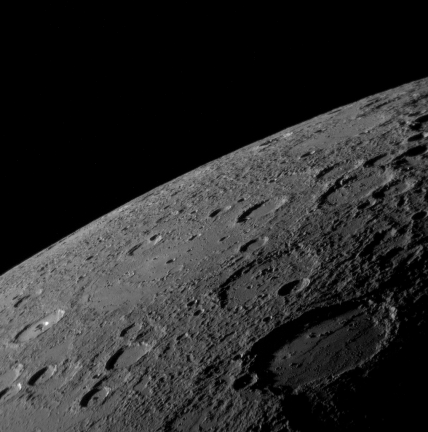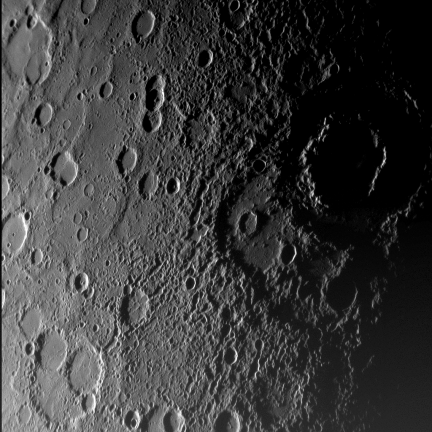Cassini’s Io Animation
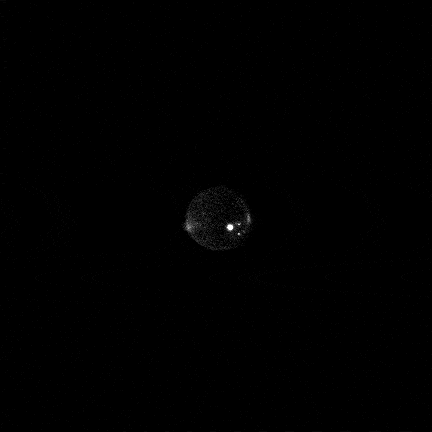 Check out this great animation found on the internet a while back that was compiled from images taken by the Cassini probe as it flew by Jupiter at the tail end of 2000. It used to be hosted at a U.S. astrogeology site which no longer exists and the animation was credited to Paul Geissler. Those glowing dots are active volcanoes. At the very end there is a blast of light from a crescent Io coming into view. The features are strikingly similar to those of the “dark side” image of Io published here during the New Horizons encounter, including the “auroral displays in Io’s tenuous atmosphere interacting with Jupiter’s magnetosphere”.
Check out this great animation found on the internet a while back that was compiled from images taken by the Cassini probe as it flew by Jupiter at the tail end of 2000. It used to be hosted at a U.S. astrogeology site which no longer exists and the animation was credited to Paul Geissler. Those glowing dots are active volcanoes. At the very end there is a blast of light from a crescent Io coming into view. The features are strikingly similar to those of the “dark side” image of Io published here during the New Horizons encounter, including the “auroral displays in Io’s tenuous atmosphere interacting with Jupiter’s magnetosphere”.
NOTE: The animation was cleaned up a bit by wanderingspace.net just for presentation purposes. This mostly included increasing the canvas size, removing all the surrounding noise and darkening the disc of Io itself.
Oh Io
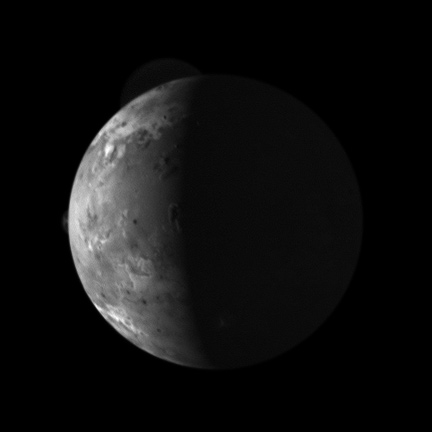 Just looking at the New Horizon images of Io from last year. There were a bunch Io images posted here during that flyby… but i like especially the tiny small plume you can see sharply on the left edge of Io (seen blown out on this post). Most images placed an emphasis on the larger Tvashtar Volcano seen top, left of center.
Just looking at the New Horizon images of Io from last year. There were a bunch Io images posted here during that flyby… but i like especially the tiny small plume you can see sharply on the left edge of Io (seen blown out on this post). Most images placed an emphasis on the larger Tvashtar Volcano seen top, left of center.
A Triple!
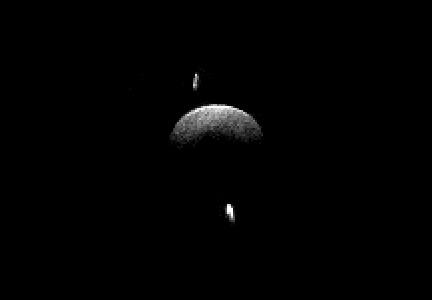 Just in time for Valentine’s Day… a ménage à tous! Aricebo captured this radar image of asteroid 2001SN263 which turned out to be a triple asteroid. This is the first near-Earth object found to have more than one moonlet. Is it just me or does that main asteroid seem orb-like?
Just in time for Valentine’s Day… a ménage à tous! Aricebo captured this radar image of asteroid 2001SN263 which turned out to be a triple asteroid. This is the first near-Earth object found to have more than one moonlet. Is it just me or does that main asteroid seem orb-like?
Wallpaper: Mercury Portrait Updated
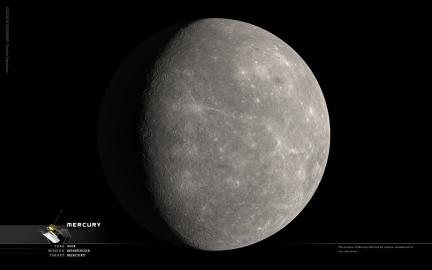 Seemed about time to update the old Mercury “portrait” wallpaper to the new Messenger Mercury “portrait”. It seems possible this color view of Mercury may be replaced again by a better view from the coming October Messenger flyby of Mercury (or perhaps by yet unreleased images from the January flyby), but for now this sure does it.
Seemed about time to update the old Mercury “portrait” wallpaper to the new Messenger Mercury “portrait”. It seems possible this color view of Mercury may be replaced again by a better view from the coming October Messenger flyby of Mercury (or perhaps by yet unreleased images from the January flyby), but for now this sure does it.
NOTE: This is a re-post, the image has been updated with Gordan Ugarkovic’s colors as the official NASA version had a good amounf of false colors which gave many details a blueish hue that would not be visible to human eyes.
Wallpaper: Northern Cloudtops on Saturn
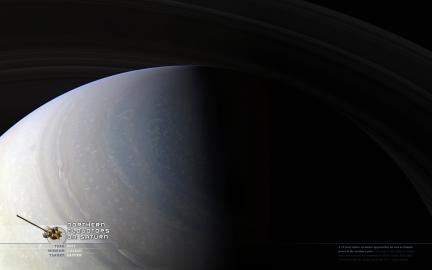 Wallpaper image made from previous post.
Wallpaper image made from previous post.
NOTE: The rings to the right of the terminator were sampled from actual images and rendered out in 3-D software to fill the page. The dark outline of the right side of the globe is artificial. Everything to the left of center is actual image. See previous post for unadulterated version of the image. Color composite and rings are by wanderingspace.net.
15 Year Winter on Saturn is Ending
 The northern region of Saturn is starting to come to light as a 15 year-long winter is slowly making its transition to spring. This means the northern pole of Saturn which has remained in darkness since Cassini’s arrival will eventually be exposed to natural light. Don’t forget that this is the pole that sports the oddly hexagonal structure which we have yet to see in high detailed natural light.
The northern region of Saturn is starting to come to light as a 15 year-long winter is slowly making its transition to spring. This means the northern pole of Saturn which has remained in darkness since Cassini’s arrival will eventually be exposed to natural light. Don’t forget that this is the pole that sports the oddly hexagonal structure which we have yet to see in high detailed natural light.
Carnival of Space #39
CASSIE the Online Cassini Simulator
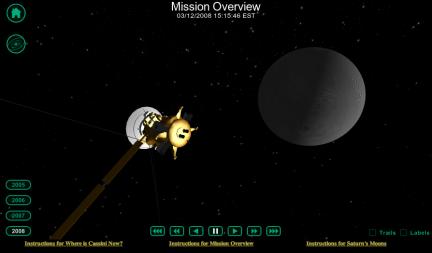 Go over and check out the interactive Cassini simulator at saturn.jpl.nasa.gov. Shown above is the simulator’s view of Cassini’s upcoming Enceladus flyby. Scale at this view is not terribly accurate as when you spin the view around — it will seem as if the spacecraft is the same size as the moon. However, it is pretty cool watching the mission in high speed with the labels and orbit trails turned on as seen below.
Go over and check out the interactive Cassini simulator at saturn.jpl.nasa.gov. Shown above is the simulator’s view of Cassini’s upcoming Enceladus flyby. Scale at this view is not terribly accurate as when you spin the view around — it will seem as if the spacecraft is the same size as the moon. However, it is pretty cool watching the mission in high speed with the labels and orbit trails turned on as seen below.
You will probably have to install a plug-in to use this, but it is quite simple. It should take care of itself for PC users, for MAC users you only need to download the installer and execute the installation from wherever your downloaded files reside. Some platforms may require restarting the browser should the plug-in appear to not be working after installation.
If this isn’t impressive enough for you and you want to go hard-core, try downloading CELESTIA. This is an application based simulator of our galaxy that is supported by a community of users which expand the program’s capabilities by keeping the surface maps of all the planets and moons up to date. There are even mission simulators you can download and ride shotgun along with historic missions such as Voyager and many others. Even more impressive is flying to other star systems where astronomers have discovered exo-planets and discovering that someone has already added a hypothetical model of that new world to the data set. A fair warning is in order — installing this is and then expanding the program through use of the Celestia Motherlode may result in hours worth of unproductive time.
Here is what an Enceladus flyby looks like in Celestia with updated skins. This is an actual screengrab from the application.
Mercury in Color II
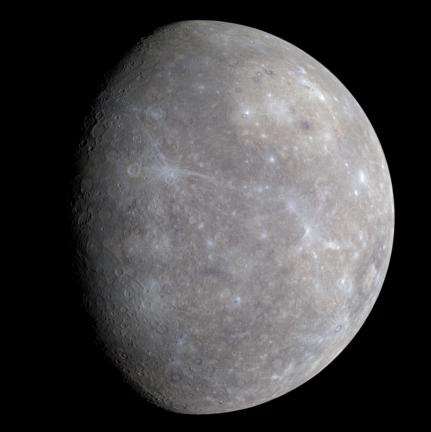 Another new color image of Mercury (with a more complete globe than the previous) appeared at the Messenger site yesterday. This image can also be downloaded as the newest “portrait” image of the smallest planet here.
Another new color image of Mercury (with a more complete globe than the previous) appeared at the Messenger site yesterday. This image can also be downloaded as the newest “portrait” image of the smallest planet here.
Carnival of Space #38
Trying to be much better about linking to these. The 38th Carnival is up at sortingoutscience.net. Wanderingspace did the 22nd back in September of 07.
Northern Mercury
New Horizons Opens its Vault
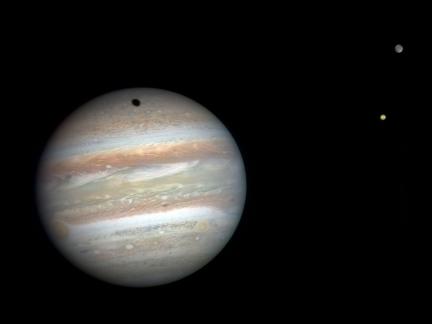 The New Horizons team has made all the MVIC (Multispectral Visible Imaging Camera) images as well as the LORRI (Long Range Reconnaissance Imager) images from the Jupiter encounter available for imagers to kick around. The above image is by Gordan Ugarkovic and is apparently a “colorized” version of a monochrome he created using earth based observations of the planet from around the same time. In addition to the two moons (and a shadow), also visible are both the Great Red Spot as well as the “Red Junior” spot which has in recent months has become a new notable feature of Jupiter.
The New Horizons team has made all the MVIC (Multispectral Visible Imaging Camera) images as well as the LORRI (Long Range Reconnaissance Imager) images from the Jupiter encounter available for imagers to kick around. The above image is by Gordan Ugarkovic and is apparently a “colorized” version of a monochrome he created using earth based observations of the planet from around the same time. In addition to the two moons (and a shadow), also visible are both the Great Red Spot as well as the “Red Junior” spot which has in recent months has become a new notable feature of Jupiter.
Messenger’s First Mercury Image in Color
Highlights for 2008
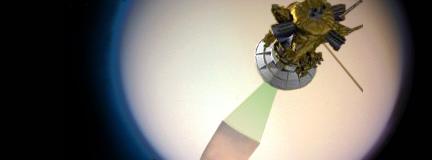 Cassini takes a pass at Titan on February 22 (already having made a pass this year on January 5th).
Cassini takes a pass at Titan on February 22 (already having made a pass this year on January 5th).

Soon after Titan, Cassini performs a truly unexpected maneuver and flies directly through the plumes of Enceladus on March 12th. This is a somewhat risky task for the probe as the particles it will surely encounter may pose some kind of impact threat to the spacecraft. Mission planners expect the risk to be low as they intend to turn the spacecraft around and let the less delicate side of Cassini bear the brunt of the material and photograph the geysers as it moves away from Enceladus. It should make for some of the most exciting planetary science planned for this year.

Cassini has another go at Titan on March 25.

Yup – you guessed it. Cassini at Titan again on May 12th.
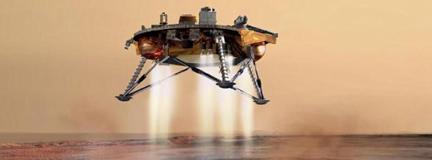
The Phoenix lander arrives at Mars on May 25th and (hopefully) makes good on the failure of the Mars Polar Lander. It will be the first time a probe will attempt a landing on the Martian pole and will conduct a series of experiments looking for the existence of water ice.

You can never have too much of a good thing. Cassini at Titan again on May 28th as well as July 31.
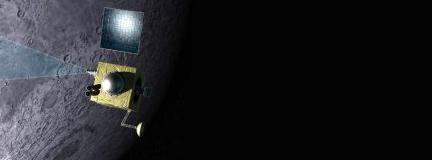
Chandrayaan becomes India’s first planetary probe as it leaves for the moon in Early July (was April).
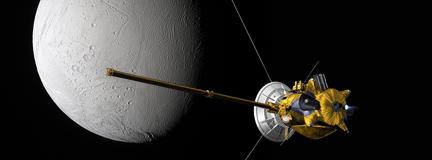
The extended Cassini mission has made Enceladus a prime target of investigation and the new encounters begin on Aug 11th and comes within 54km of the surface.
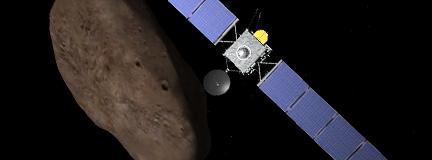
Rosetta still on its way for an encounter with Comet 67P/Churyumov-Gerasimenko in 2014, will make a close pass at an asteroid named 2867 Steins on Sept 5th at a distance of only 1700 km. Steins is a small asteroid measuring only a few kilometers in size and the craft will be traveling at a relatively slow speed which should allow for some good resolution images to be acquired during the encounter.
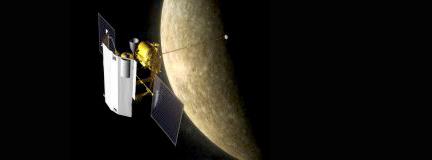
Messenger (having just completed the first encounter in 33 years this past week) has another go at Mercury on Oct 6th and flies past more uncharted territory on its way to eventual orbit insertion in 2011.

Two more close flybys of the Saturnian moon Enceladus on Oct 9 and Oct 31. The first at hair-raising distance of 25km and the second around a more reasonable 200km.
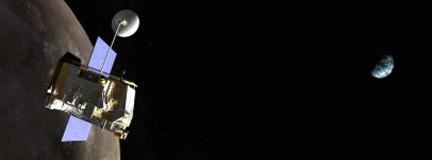
In an effort to recognize the International Lunar Decade (and intended manned Lunar missions within 15 years), the United States returns to the moon with the Lunar Reconnaissance Orbiter on Nov 3rd. It is expected to begin its scientific goals only 3 days after launch and is expected to look for possible deposits of water ice in permanently shadowed craters near the Lunar poles.

And finally more Titan flybys on Nov 3, Nov 19, Dec 5 and Dec 21.
All this is in addition to the ongoing work of Opportunity and Spirit on the surface of Mars. Mars Express and Mars Reconnaissance in orbit around Mars. Cassini’s non-targeted continuing tour of other icy Saturnian moons. And who knows, maybe we will see more than 2 or 3 reports coming from the ever quiet Venus Express mission currently at Venus.
Sadly, some very exciting missions will be quietly traveling en route to their targets and are not expected to be heard from in 08 like the Dawn Mission to the Asteroid Belt, New Horizons mission to Pluto/Charon, the newly re-targeted Deep Impact mission (now known as Epoxi) as well as Stardust now on its way to a follow-up visit to Tempel 1 the comet that was smacked by Deep Impact in 2005.
Saturnati X
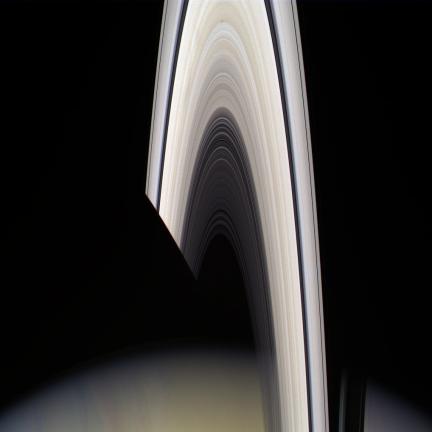 This image taken on January 18, 2008 from 988,018 km,
This image taken on January 18, 2008 from 988,018 km, 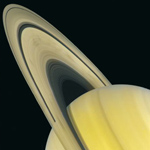 reminds one of some of those vintage Voyager images of Saturn (seen at left) from back in the early and mid 1980’s. Just compare at the incredible differences between the quality and color of the Voyager vs. Cassini images. Saturn images during the Voyager era were all consistently yellow and brown, but today’s Cassini images reveal Saturn to be a rich peach color mixed with hints of yellow and brown. We also have the advantage of being witness to the rich blues currently appearing in the northern hemisphere which did not exist in 1981 or 1986.
reminds one of some of those vintage Voyager images of Saturn (seen at left) from back in the early and mid 1980’s. Just compare at the incredible differences between the quality and color of the Voyager vs. Cassini images. Saturn images during the Voyager era were all consistently yellow and brown, but today’s Cassini images reveal Saturn to be a rich peach color mixed with hints of yellow and brown. We also have the advantage of being witness to the rich blues currently appearing in the northern hemisphere which did not exist in 1981 or 1986.
Mercury From 5,000 km
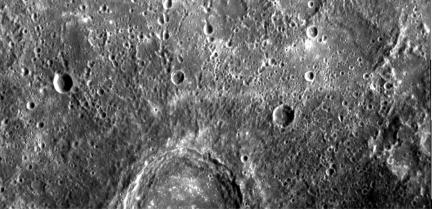 Closer images are beginning to appear. This image comes from around 20 minutes after the closest approach.
Closer images are beginning to appear. This image comes from around 20 minutes after the closest approach.
Oh… and the mission site for those of you intrigued enough to follow more data driven material.
